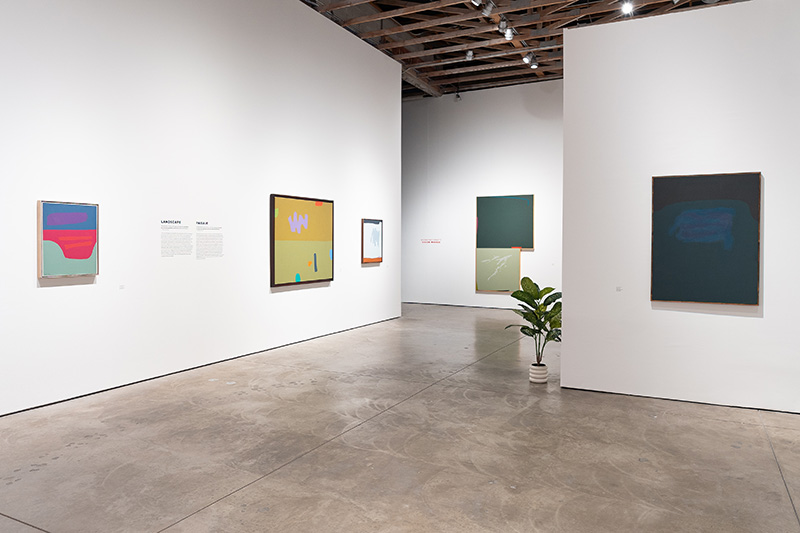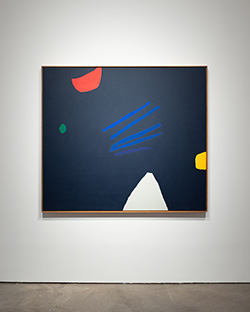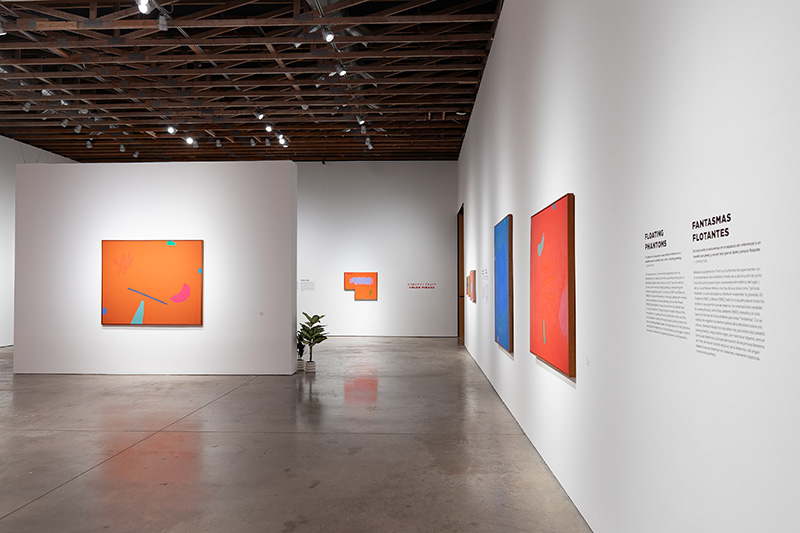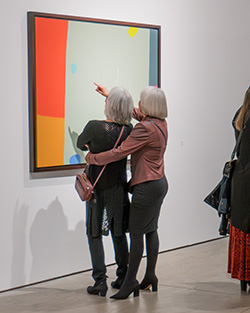Curator Offers Tips for Understanding Abstract Art

Do you find abstract art to be challenging? Have you ever looked at a nonrepresentational piece and thought “I don’t get it”? Maybe we can help.
Lauren R. O’Connell, co-curator of Dorothy Fratt: Color Mirage, sat down with Brian Passey, senior communications manager for Scottsdale Arts, to talk about how people who are less experienced with abstract art might approach exhibitions like Color Mirage, which is on view at Scottsdale Museum of Contemporary Art (SMoCA) until July 21, 2024.

Dorothy Fratt: Color Mirage is the first major U.S. museum exhibition on the prolific, yet underrecognized, American painter Dorothy Fratt (1923–2017). Fratt’s paintings are often classified as color field and abstract expressionist. Spanning more than five decades of the artist’s work, the exhibition includes numerous paintings that exemplify Fratt’s vibrant and distinct style of abstraction. O’Connell, curator of contemporary art at SMoCA, curated Color Mirage with Jennifer McCabe, SMoCA’s director and chief curator.
Brian Passey: Nonrepresentational and/or abstract art might be challenging to some visitors who are unaccustomed to it. What tips do you have for embracing this type of art?
Lauren O’Connell: I suggest letting go of any preconceptions you have about what art should look like. When looking at abstract art, use your intuition and tap into how the shapes, colors, or movements make you feel. This kind of art can be disorienting because humans naturally want to orient themselves within a narrative or scene. Whereas abstract art resonates in our subconscious, creating unique responses based on the individual.

BP: Some visitors to SMoCA might feel as if they don’t understand the art of Dorothy Fratt. What are some entry points to help them have a more fulfilling experience with the Color Mirage exhibition?

LO: If you are someone who likes to process information and try to understand the artist, read the text on the walls. They are filled with insight into who the artist was and why she made this kind of art. If you prefer to look, then quickly glance around the room, and walk up to the first painting that makes you pause. Look only at that painting and see where your mind goes. Do the shapes or colors remind you of anything? Does the title clarify or confuse what you see? There is no right or wrong way to look at art; you decide how you approach it. Sometimes I play a game when I go to big museums with friends. We will walk around a gallery and then come back together to report which work we would want to take home with us and why. I always learn something new about the artwork and my friend.
BP: From Jackson Pollock’s drip technique to Mark Rothko’s color field work, abstract artwork can draw critiques from those who believe it doesn’t require any talent and that they, the critics, could do it themselves. How would you respond to that type of criticism?
LO: While the techniques might seem easy, it really comes down to the expression of the artist through the application of paint, color selection, and dedication. Just because you can throw paint on a canvas doesn’t mean that it is going to look good or stir emotions in the viewers. I once went to a Mark Rothko exhibition and really had to sit with the work to reflect on how my body was reacting to the paintings. Although the general compositions of the paintings were similar, the various color combinations made me feel different things: from emotions swelling in my chest to feeling as though I was physically being drawn in or pushed away from the painting by an invisible force field.
Generous support for Dorothy Fratt: Color Mirage provided by Title Partners Walter and Karla Goldschmidt Foundation and The Virginia M. Ullman Foundation, Signature Partner Yares Art, New York, and Supporting Partner Pazo Fine Art, and Supporting Sponsors Nancy and Robert Kravetz Philanthropic Fund, John Armstrong and Joan Prior, and Christy and Charlie Jerz.
Back to Inspire home.
CONNECTIONS: Spark | Amplify | Immerse

